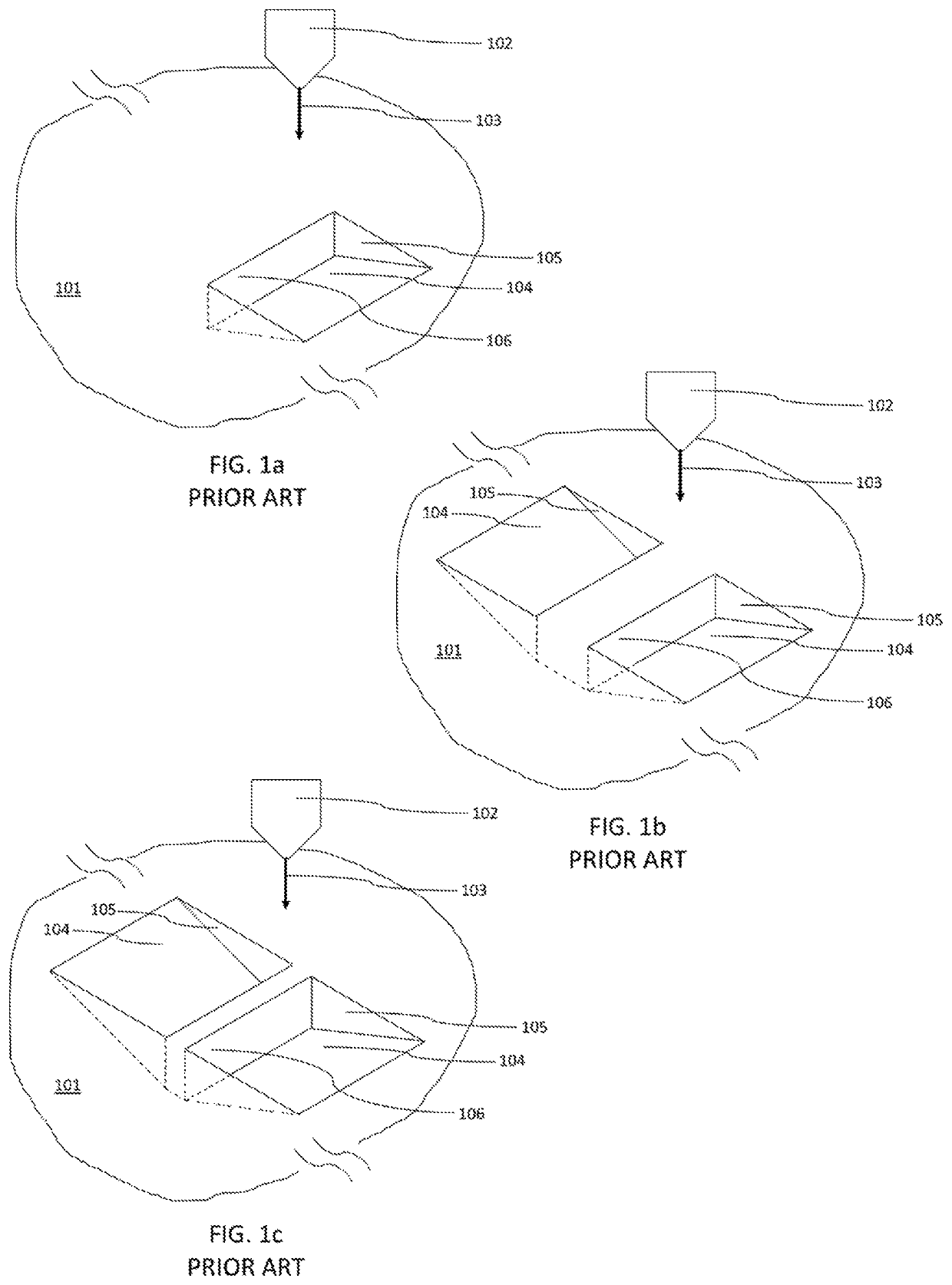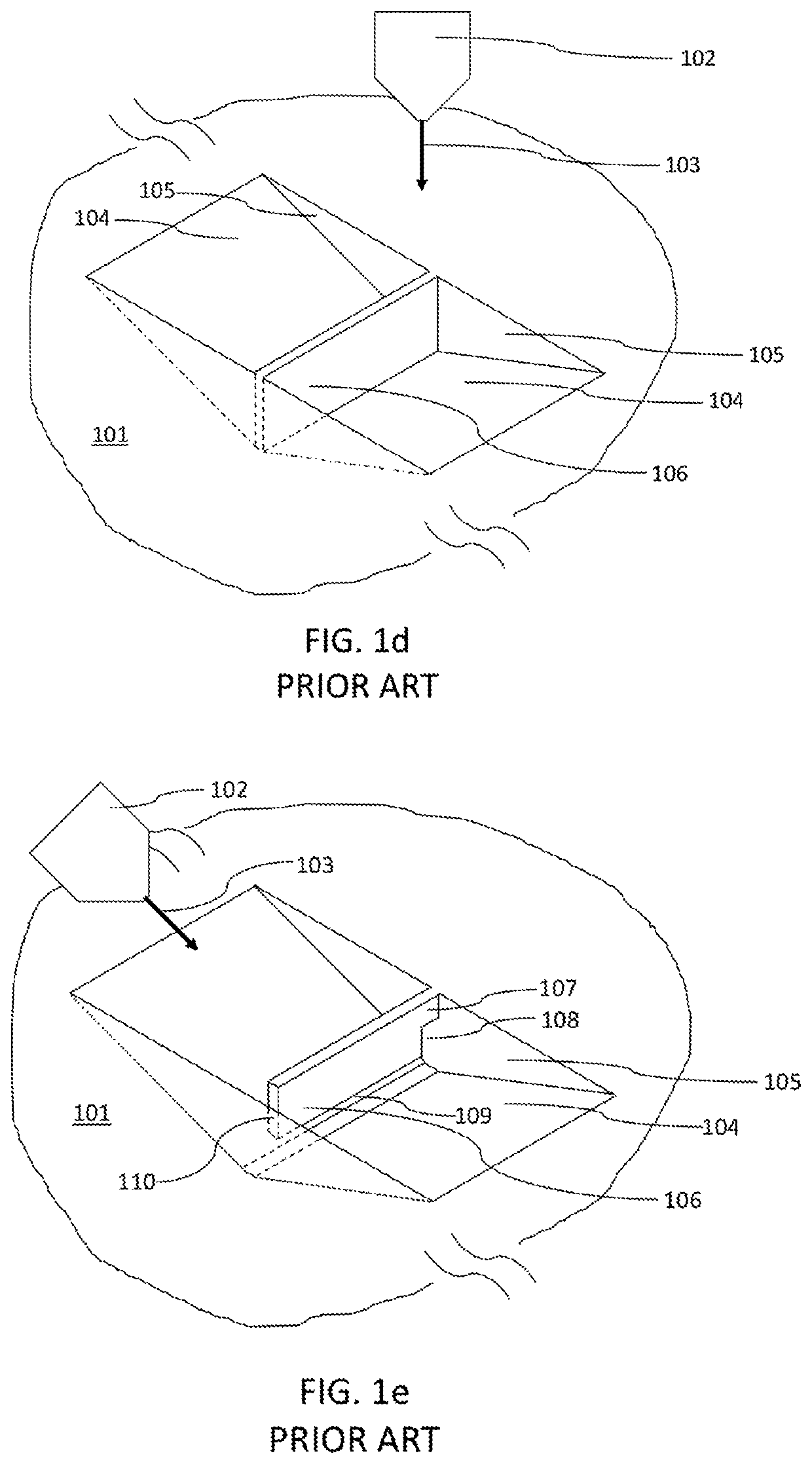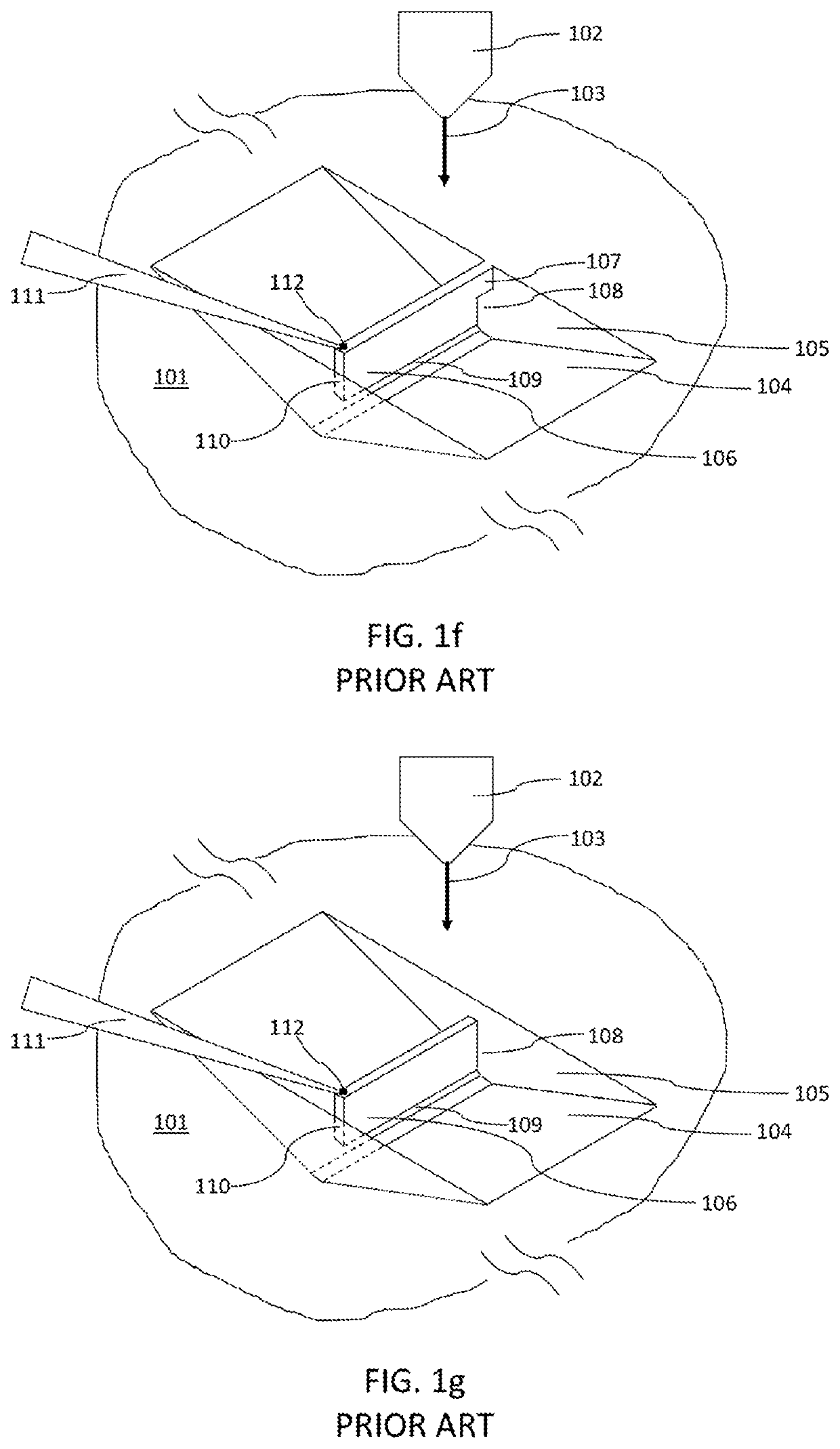Method of producing lift out specimens for teaching, practice, and training
a lift out and specimen technology, applied in the direction of sampling, instruments, electric discharge tubes, etc., can solve the problems of requiring many hours of expensive fib time for new users, requiring hours, weeks or years to master the lift out method, and requiring hours of fib training, etc., to achieve greater repetition, faster rate, and easy to train, education, execution and practi
- Summary
- Abstract
- Description
- Claims
- Application Information
AI Technical Summary
Benefits of technology
Problems solved by technology
Method used
Image
Examples
Embodiment Construction
[0040]It is understood that these 3D printed AM specimens described can vary slightly in shape and dimensions without altering the intent of the invention.
[0041]FIG. 4a shows the start of a 3D printed AM processed that is built up above the substrate surface 201 with printed surface 202 using laser focusing optics 203 and scanned laser beam 204. The sample 500 has approximate dimensions X=Y where X and Y are somewhat larger than the specimen to be created, and in this case about 30-35 micrometers. Dimension X and Y need not be equal to each other, however. The exact size of the sample can vary to accommodate the 3D printed specimen size. The height, Z″″ in this initial step is only about 1 micrometer but will continue to grow as the sample 500 continues to be printed. It should be noted that the structures forming the trench floor 205 and sidewalls 206 and the specimen 207 are not yet visible at this early stage in the additive manufacturing process.
[0042]In FIG. 4b, the 3D printing...
PUM
| Property | Measurement | Unit |
|---|---|---|
| angle | aaaaa | aaaaa |
| height | aaaaa | aaaaa |
| height | aaaaa | aaaaa |
Abstract
Description
Claims
Application Information
 Login to View More
Login to View More - R&D
- Intellectual Property
- Life Sciences
- Materials
- Tech Scout
- Unparalleled Data Quality
- Higher Quality Content
- 60% Fewer Hallucinations
Browse by: Latest US Patents, China's latest patents, Technical Efficacy Thesaurus, Application Domain, Technology Topic, Popular Technical Reports.
© 2025 PatSnap. All rights reserved.Legal|Privacy policy|Modern Slavery Act Transparency Statement|Sitemap|About US| Contact US: help@patsnap.com



